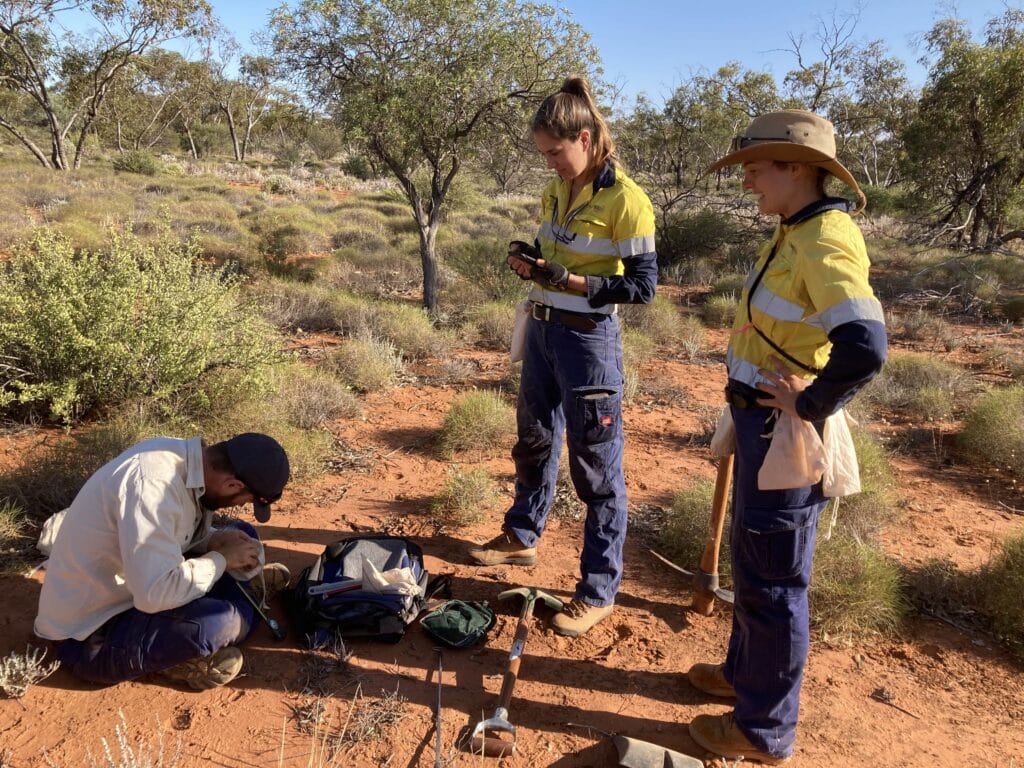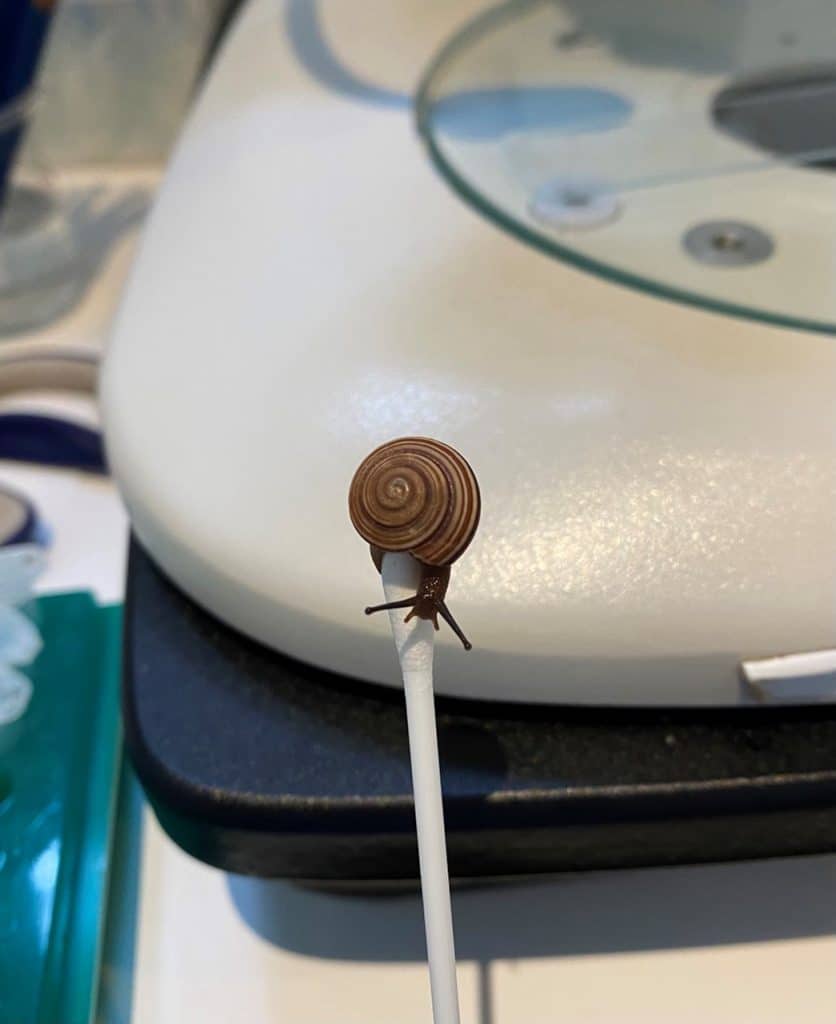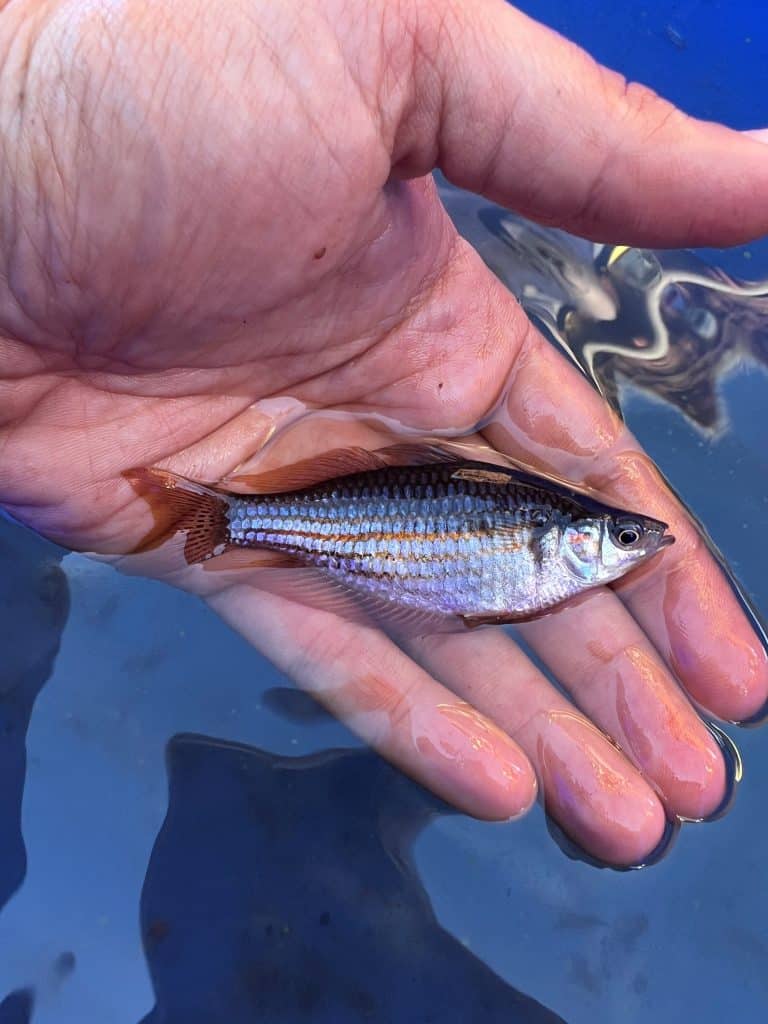Liesel Morgan Land snails often exhibit high levels of endemism and are vulnerable to habitat degradation. As such, they are…
Two zoologists from Biologic Environmental Survey made the 700-kilometre road trip north to assist Bush Heritage Australia with their annual fauna monitoring at Hamelin Station Reserve, Western Australia (WA). The flat red country dominated by mallee was a pleasant change of scenery from the usual tall red mesas and hills of the Pilbara that the zoologists were used to.
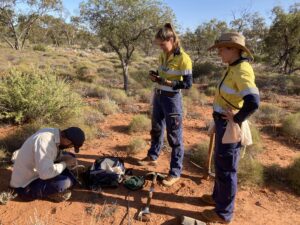
Early each morning the team would head out to check the trap sites which consisted of pitfalls (buckets and pipes) and funnels. A diverse range of fauna was caught comprising of small mammals, monitors, legless lizards, dragon species, and various skink species including the threatened Hamelin skink (Ctenotus zastictus, Vulnerable – Environment Protection and Biodiversity Conservation Act 1999 [EPBC Act] and under the WA Biodiversity Conservation Act 2016 [BC Act]) which is only found in a tiny area on Coburn and Hamelin Station inland of Shark Bay WA.
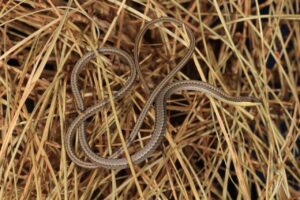
A legless lizard (P.edelensis) seen on Hamelin Station WA. Photo: R.J. Ellis
Of particular interest was the capture of a legless lizard, Pletholax edelensis, which had not been previously recorded. This legless lizard is a Priority (P3 – DBCA) listed species only found in the Shark Bay region of WA, and only two records occur in the area from the peninsula (DBCA, 2020). This is quite noteworthy because it is not a peninsula record suggesting the species may actually occur further inland than previously thought.
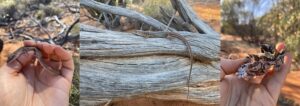
A pygmy monitor (Varanus brevicauda)(left), Hamelin skink (Ctenotus zasticus)(middle), and a thorny devil (Moloch horridus)(right), all found at Hamelin Station WA. Photos: H.E. Anderson
Another exciting record was of a juvenile pygmy monitor (Varanus brevicauda) as it is the most southern extent of the species’ distribution in WA and is also the second smallest monitor in the world. Other interesting finds was seeing and hearing western grasswrens (Amytornis textilis textilis, Priority 4 – DBCA), catching a female dunnart with pouch young and finding the much-loved iconic thorny devil (Moloch horridus).
We look forward to working more with Bush Heritage Australia, so stand by for more updates!
